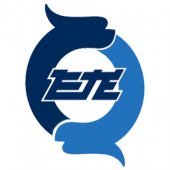-
Welcome to Auto Parts Forum
Whether you are a veteran automotive parts guru or just someone looking for some quick auto parts advice, register today and start a new topic in our forum. Registration is free and you can even sign up with social network platforms such as Facebook, X, and LinkedIn.
MINIEYE and Cyrus develop a whole set of perception system for ADAS
-
Similar Topics
-
By Counterman
link hidden, please login to view and link hidden, please login to view shop owners and auto parts professionals set sail this June on the link hidden, please login to view, where over 60 attendees visited the Last Frontier – Alaska. Departing from Seattle, Washington, trip attendees experienced an all-inclusive VIP experience on the Royal Caribbean Ovation of the Seas cruise ship from June 14-21, traveling up the Alaskan coastline with stops in Sitka, Skagway, Juneau and Victoria, British Columbia Canada.
During the months of September, October and November 2023, professional technicians and shop owners had the opportunity to earn entries on MyPlace4Parts with every qualifying invoice and a chance to be a grand-prize winner. Each winner and their guest joined Auto Value and Bumper to Bumper hosts as they got ready to depart on their exciting adventure, beginning with a welcome reception and dinner in Seattle. Once onboard, guests had a 7-night, 8-day adventure packed with activities and shore excursions, the
link hidden, please login to view said. Entries were earned with every qualifying invoice worth $150 from an Auto Value or Bumper to Bumper parts supplier. In addition, MyPlace4Parts users earned automatic bonus entries each day for every $150 increment made through MyPlace4Parts. Beyond the grand prize adventure cruise, there was also a total of $45,000 in gift cards given to 240 other lucky winners.
“This trip has been nothing but amazing, exceeding all our expectations. We are extremely fortunate to be a small part of the Auto Value & Bumper to Bumper family with our parts supplier, Moog Louisville Warehouse,” said Steve Morton, of Morton’s Auto and Truck Repair in New Albany, IN. “We love the 32-year business relationship we have with Moog who are our main supplier for all our parts. We couldn’t do what we do daily without their support and thank them, Auto Value & Bumper to Bumper and their industry partners for this amazing trip!”
Once on the Ovation of the Seas cruise ship, guests were treated to all-inclusive amenities and celebrated the first night on the ship with a group reception and private dinner seating. Each winner and their guest had a unique selection of port excursions, including whale-watching boat tours, ziplining, 4x4s and e-bikes adventures, helicopter rides, dog-sledding experiences, and much more. Each port offered an opportunity for shopping and dining before setting sail to the next destination.
“This was a magical experience and one my wife and I would not have been able to take without the help of our parts supplier, everything from start to finish was amazing,” said Tony Spraggins of Spraggins Auto Repair in Longview, TX, and customer of ABC Auto Parts. “We are so thankful to everyone who helped make this trip possible, including the manufacturers who sponsored our Alaskan Adventure.”
“The Auto Value and Bumper to Bumper promotional sweepstakes events showcase the power of business partnerships,” said Jim Holik, director of marketing for Auto Value and Bumper to Bumper. “The professional shop owners and guests who came on this promotion have a chance to experience once in a lifetime adventures, but also create and build friendships with each other. Our manufacturing channel partners who help with these customer experiences deserve a lot of appreciation and once again we thank them for their continued support.”
The post
link hidden, please login to view appeared first on link hidden, please login to view.
link hidden, please login to view -
By Dorman Products
Before selling a vehicle, make sure to remove personal data from the infotainment system
-
By Counterman
Mark Thomas, North American training manager with U-POL, and Kevin Lewis, regional sales manager with U-POL, demonstrate two-coat texture replacement with U-POL’s Raptor Product System using both a 3M Performance H/O gun and U-POL’s 4880 Professional Vari-Nozzle gun.
link hidden, please login to view
link hidden, please login to view The post
link hidden, please login to view appeared first on link hidden, please login to view.
link hidden, please login to view -
By Counterman
In this second installment, Jason Stahl from BodyShop Business and Mark Thomas, North American training manager with U-POL, discuss the application methods for U-POL’s Raptor Product System and its versatility as a two-coat texture replacement product.
link hidden, please login to view link hidden, please login to view
The post
link hidden, please login to view appeared first on link hidden, please login to view.
link hidden, please login to view
-




Recommended Posts
Join the conversation
You can post now and register later. If you have an account, sign in now to post with your account.
Note: Your post will require moderator approval before it will be visible.